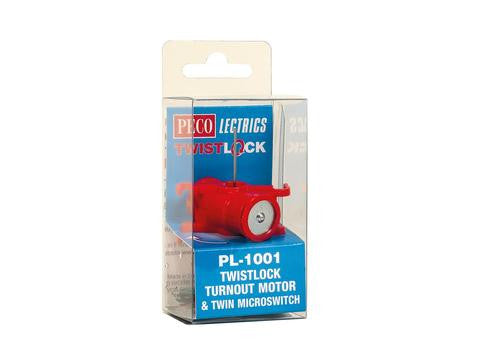Peco PL-1001 Twistlock Turnout Motor & Twin Microswitch N, HO or O Scale
$26.24 $13.00
Save: 50% off
-
Free standard home delivery on all orders
-
90 Days Easy Returns
View More Return Policy
-
Delivered within 3 - 7 days (excludes Public holidays).
Description
The Peco PL - 1001 Twistlock Turnout Motor paired with a Twin Microswitch is a top - notch choice for N, HO, or O scale model train enthusiasts. This TwistLock is a basic electric solenoid motor that mainly operates turnouts. The twin microswitch offers options like switching polarities, running signals, or lighting up panel lights. It runs on a normal 16vDC supply and can handle up to 3 amps. It's fully compatible with all PECO turnouts up to O gauge and many other well - known brands. You won't need to solder wires to terminals or cut large holes in the baseboard. Each motor comes with a template. Use it to mark three holes accurately. The two outer holes are for mounting studs under the baseboard. The larger center hole is where the motor's drive pin goes through the turnout's tie bar. Simply twist and lock the motor into place, and it will stay firm during operation. Every motor includes an extra operating bar and spacers for studs, allowing above - board mounting when required. Dimensions: Length is 42mm, Hook to Hook is 42mm, and Depth is 25mm.

Using this Peco PL - 1001 Twistlock Turnout Motor is easy. First, take the template that comes with the motor and use it to mark three holes on the baseboard. Drill these holes carefully. Attach the mounting studs to the two outer holes under the baseboard. Thread the motor's drive pin through the larger center hole and the turnout's tie bar. Then, twist the motor into position until it locks firmly. If you need to mount the motor above the board, use the extra operating bar and spacers provided. When it comes to power, make sure to use a normal 16vDC supply, and don't exceed 3 amps. As for maintenance, keep the motor clean and free from dust. Check the connections regularly to ensure they are secure. Avoid dropping or rough handling of the motor, as it may affect its performance.